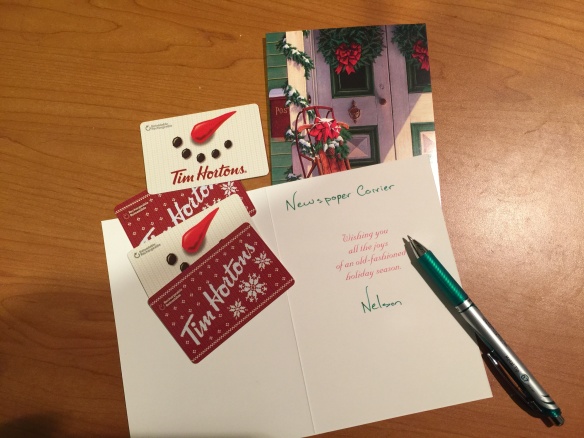
The quest to find the one perfect gift for everyone at Christmas or to find the one-size-fits-all way to recognize all staff is doomed to fail.
Gift cards don’t do it. Nor do logo-emblazoned coffee mugs or golf balls. Plaques, trophies and certificates work for some, but will not work for all staff.
Add gift baskets, often used by professional firms (accountants, lawyers, architects and such) at year-end to thank their clients for their business, to the list of techniques that work for some, but not all.
Nothing screams, “I don’t know you and don’t care enough to learn more about you as an individual,” as when everyone receives the same year-end gift or token of appreciation as everyone else does.
Treating everyone the same ignores an important truth. Everyone is different. They have different interests and preferences.
With this in mind, it was refreshing to learn of one company that sees things differently. While still carrying on the tradition of year-end gift baskets, it chose to personalize them.
Rather than purchasing a number of identical gift baskets from a big-box store, the company engaged someone (we’ll call her Sandra), who worked with managers to create gift baskets with the recipients in mind.
She asked them to tell her what they knew about their clients, in much the same way leaders can ask questions to learn how to recognize staff in Appropriate ways.
What sports teams do they support? Do they have pets? What kind? What’s their favourite drink? Beer? White wine or red? Tea or coffee? What treats do they enjoy the most?
Armed with this information, Sandra went shopping: a collection from Lindor for a chocolate lover. Special cat or dog treats. Craft beer for one client, red wine for another.
Each basket was unlike any other. Recipients noticed (responses have been edited to protect the privacy of individuals):
“It was wonderful to find a calendar with pictures of horses in my basket. My staff really enjoyed it. They all know how much I love horses.”
“Here’s a picture of my dog wearing the bandana with the logo of my favourite hockey team. What a great gift!”
“Loved my ‘green’ gift basket. It’s my favourite colour. Where did you find so many items that were green?”
Suggested Action: List your staff members’ names. Next to each, write what you know about them as individuals (Use the 7 questions to ask to recognize staff Appropriately as a guide, if necessary). How can you use this information when you recognize these unique individuals for their unique contributions?
==
Finding Appropriate ways to recognize staff is one topic you will discuss during my Staff Recognition: One Piece at a Time program. Email nmscott@telus.net or call (780) 232-3828 to learn more and schedule your One Piece at a Time workshop.

